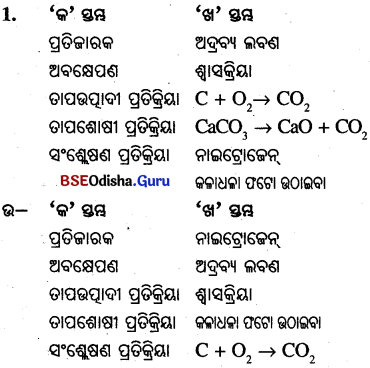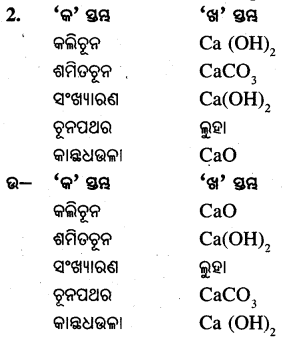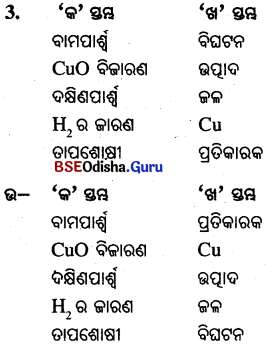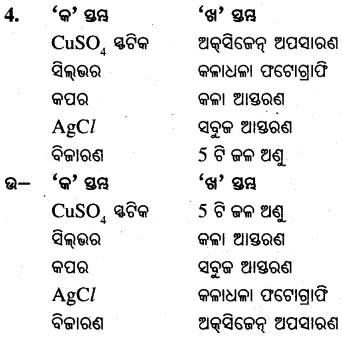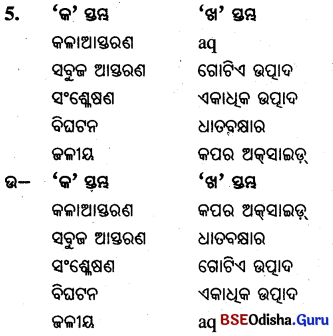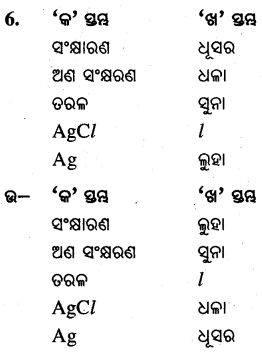Odisha State Board CHSE Odisha Class 12 Invitation to English 2 Solutions Non-Detailed Chapter 4 The Monkey’s Paw Textbook Exercise Questions and Answers.
Class 12th Invitation English Non-Detailed Chapter 4 The Monkey’s Paw Question Answers CHSE Odisha
The Monkey’s Paw Class 12 Questions and Answers
Scene – 1
Gist:
It is a dark and stormy winter night. The Whites.’ living room is comfortable and fine. Herbert plays chess with his father. An old friend of Mr. White, Sergeant-Major Morris comes to visit them after spending more than twenty years in India and entertains his hosts with exotic stories of life abroad. He narrates the story of a monkey’s paw. He pulls it out of his pocket. Herbert takes the paw and looks at it with curiosity. Mr. White is interested to know about its speciality. Morris becomes serious and says that an old holy man had put on a magic spell on the monkey’s paw and as a result, it will grant its owner three wishes.
At last he sells it to Mr. White. Morris warns the Whites not to wish anything from it at all, but they can do it with horrible consequences. Herbert believes that Sergeant Major Morris’s stories are nothing but a pack of tall tales and treats the monkey’s paw with irreverent humour. In his view, “Morris is quite a story-teller.” Mr. White is more willing to consider the truth of the monkey’s paw than Herbert, but Mrs. White is far less credulous than her husband. Herbert encourages his father to wish for an emperorship and then jokingly suggests to him to wish for two hundred pounds to pay off the mortgage; the latter obliges and then drops it in a state of fear. Herbert does not believe it for a moment that the paw is magical, but he unwittingly predicts the outcome of the wish when he tells his parents that he knows he’ll never see the money. He teases his mother. This unit comes to a close, with the family retiring to bed.
ସାରମର୍ମ :
ଏହା ଥିଲା ଏକ ଅନ୍ଧାର ଓ ଝଡ଼ତୋଫାନର ରାତି । Mr. Whiteଙ୍କର ପ୍ରକୋଷ୍ଠ ଥିଲା ଆରାମଦାୟକ ଓ ସୁନ୍ଦର । Herbert ତାଙ୍କ ବାପାଙ୍କ ସହ ଚେସ୍ ଖେଳୁଛନ୍ତି । ଏହି ସମୟରେ Mr. Whiteଙ୍କର ଜଣେ ପୁରୁଣା ବନ୍ଧୁ Sergeant Major Morris ଆସିଛନ୍ତି ଯିଏକି ଭାରତରେ କୋଡ଼ିଏ ବର୍ଷରୁ ଊର୍ଦ୍ଧ୍ବ ସମୟ ଅତିବାହିତ କଲା ପରେ ସ୍ଵଦେଶ ଫେରିଛନ୍ତି । ସେ ତାଙ୍କ ଅନୁଭୂତିର ଗଳ୍ପସବୁ କହି ଏହି ଅତିସତ୍କାରକାରୀମାନଙ୍କୁ ଖୁସି କରାଇଛନ୍ତି । ସେ ଗୋଟିଏ ମାଙ୍କଡ଼ର ପଞ୍ଝା ବିଷୟରେ ବର୍ଣ୍ଣନା କରନ୍ତି । ସେ ନିଜ ପକେଟରୁ ଏହାକୁ ବାହାର କରନ୍ତି । Herbert ଏହି ପଞ୍ଝାକୁ ନିଅନ୍ତି ଏବଂ ଆଗ୍ରହର ସହିତ ଦେଖନ୍ତି । Mr. White ମଧ୍ୟ ଏହାର ବିଶେଷତ୍ଵ ଜାଣିବାପାଇଁ ଆଗ୍ରହ ପ୍ରକାଶ କରନ୍ତି । Morris ଗମ୍ଭୀର ହୋଇଯାଇ କହନ୍ତି ଯେ ଜଣେ ବୃଦ୍ଧ ସନ୍ନ୍ୟାସୀ ଏହି ମାଙ୍କଡ଼ ପଞ୍ଝାରେ ମନ୍ତ୍ରଶକ୍ତି ବଳରେ ଯାଦୁ ଭରିଦେଇଛନ୍ତି । ଫଳସ୍ବରୂପ ଏହା ମାଲିକର ତିନୋଟି ମନୋବାଞ୍ଛା ପୂରଣ କରିପାରିବ ।
ଶେଷରେ ସେ ଏହି କୁହୁକ ମନ୍ତ୍ର ଥିବା ମାଙ୍କଡ଼ ପଞ୍ଝାଟିକୁ Mr. Whiteଙ୍କୁ ବିକ୍ରି କରି ଦେଇଛନ୍ତି । Morris ସେମାନଙ୍କୁ ସତର୍କ କରି ଦେଇଛନ୍ତି ଯେ ସେମାନେ ଏହାକୁ ବ୍ୟବହାର କରି କୌଣସି ଇଚ୍ଛା ବା ଆଶ ପୂରଣ ନ କରନ୍ତୁ କାରଣ ଏହା ଭୟଙ୍କର ପରିଣାମ ସହ ଇଚ୍ଛାଗୁଡ଼ିକୁ ପୂରଣ କରିବ । Herbert କିନ୍ତୁ Morrisଙ୍କର କଥାକୁ ବିଶ୍ୱାସ କରନ୍ତି ନାହିଁ । ସେ ଭାବନ୍ତି ଏଗୁଡ଼ିକ ଅତି ବାହାଦୁରୀ କଥା । ସେ ମାଙ୍କଡ଼ ପଞ୍ଝାକୁ ଥଟ୍ଟା କରନ୍ତି । ତାଙ୍କ ମତରେ ମୋରିସ୍ ଜଣେ କଥାକାର । Herbertଙ୍କ ଅପେକ୍ଷା Mr. White ମାଙ୍କଡ଼ ପଞ୍ଝାର ସତ୍ୟତା ପରୀକ୍ଷା କରିବାକୁ ଅଧିକ ଆଗ୍ରହ ପ୍ରକାଶ କରନ୍ତି । କିନ୍ତୁ Mrs. White ତାଙ୍କ ସ୍ଵାମୀଙ୍କ ଅପେକ୍ଷା ଏହାକୁ କମ୍ ବିଶ୍ଵାସ କରନ୍ତି । Herbert ତାଙ୍କ ବାପାଙ୍କୁ ଏକ ସାମ୍ରାଜ୍ୟର ଅଭିଳାଷ କରିବାପାଇଁ ଉତ୍ସାହିତ କରନ୍ତି ଏବଂ ତା’ପରେ ପରିହାସ ଛଳରେ ସେ ବନ୍ଧକ ମୁକାଳିବାପାଇଁ ଦୁଇ ଶହ ପାଉଣ୍ଡ ଇଚ୍ଛା କରିବାକୁ କୁହନ୍ତି ଏବଂ Mr. White ଏଥିରେ ରାଜି ହୋଇଯାଆନ୍ତି । ତା’ପରେ ଭୟସଙ୍କୁଳ ଅବସ୍ଥାରେ ମାଙ୍କଡ଼ ପଞ୍ଝାକୁ Mr. White ପକାଇ ଦିଅନ୍ତି । Herbert କିଛି ସମୟ ପାଇଁ ଏହି ପଞ୍ଝାର ମନ୍ତ୍ରଶକ୍ତି ବିଷୟରେ ବିଶ୍ଵାସ କରନ୍ତି ନାହିଁ । କିନ୍ତୁ ସେ ବେଖାତିର ଢଙ୍ଗରେ ଏହି ଅଭିଳାଷର ପରିଣାମ ବିଷୟରେ ଅନୁମାନ କରିପାରନ୍ତି ଏବଂ ତାଙ୍କ ବାପାମା’ଙ୍କୁ କହନ୍ତି ଯେ ସେ ଜାଣନ୍ତି ସେ କେବେହେଲେ ଟଙ୍କା ପାଇପାରିବେ ନାହିଁ । ସେ ତାଙ୍କ ମା’ଙ୍କୁ ମଧ୍ୟ ପରିହାସ କରନ୍ତି । ଏହି ଦୃଶ୍ୟଟିର ସମାପ୍ତି ଘଟେ ଯେତେବେଳେ ପରିବାରର ସଦସ୍ୟମାନେ ବିଶ୍ରାମ ନେବାପାଇଁ ଶୋଇବାକୁ ଯାଆନ୍ତି ।
![]()
Glossary :
stormy: ଝଡ଼ମୟ
thunderclap: ଘଡ଼ଘଡ଼ି ଶବ୍ଦ
cozy: comfortable
quiet: silent (ଶାନ୍ତ|ନୀରବ)
concentrate : focus (ମନୋନିବେଶ କରିବା)
howling: blowing violently (ଅଶାନ୍ତ ଭାବେ ପବନ ବହିବା)
guiltily: ଦୋଷୀ ଭାବରେ
bangs: ଖଡ଼ଖଡ଼୍ ହେବା
wiping: ପୋଛିବା
miracles: ଅଲୌକିକ ଘଟଣା
performing: ସମ୍ପାଦନ କରିବା
monkey’s paw : ମାଙ୍କଡ଼ର ପଞ୍ଝା
better off here : ଏଠାରେ ଭଲରେ ଅଛି
mummified: ସାଇତି ରଖାଯାଇଛି
horror: great fear ( ଅତ୍ୟଧ୍ଵ
curiously: କୌତୂହଳ ସହକାରେ
spell: ମନ୍ତ୍ର
solemnly: seriously (ଗମ୍ଭୀର ଭାବେ)
show …. lives: how fate governs human lives
uneasily: uncomfortably
show up: appear (ଦେଖାଦେବା )
bet: ବାଜି ମାରିବା
our ……..count: Herbert family’s votes don’t have any importance
soothingly: ସାନ୍ତନା ଦେଇ
amusement: delight (ଆନନ୍ଦ)
annoyance:displeasure
shrugging : କାନ୍ଧ ଉପରକୁ ଟେକି
fairy tale: ପରୀ କାହାଣୀ
pauses: ଅଟକିଯାଏ
alarmed: ସତର୍କ କଲେ
get rid of: ମୁକ୍ତ ହେବା
give up: ତ୍ୟାଗ କରିବା
pay off: ଶୁଝି ଦେବା
mortgage: ବନ୍ଧକ
ridiculous : funny (ହାସ୍ୟାସ୍ପଦ)
twisted: ମୋଡ଼ ନେଲା
depressing: ବିଷାଦଜନକ
silence: ନିରବତା
teasing: ଥଟ୍ଟା
squatting up : ଗୋଡ଼ ଟେକି ବସିବା
ill-gotten gains: ଖରାପ ଲାଭ
Scene – 2
Gist :
The writer takes us to the following afternoon when Mr. and Mrs. White do not desire to look at the paw that lies on the shelf. Mr. White recollects the dreadful experience as a result of his wish on the monkey’s paw. Meanwhile, there is a knock on the door. To her shocked disbelief, Mrs. White learns from the representative of Maw and Meggins that Herbert is hurt. She understands the significance of his visit. The visitor shatters their happiness with news of Herbert’s death. Herbert died because he became entangled in the machinery. The representative announces that his company will decline to take any responsibility for the accident. At last he hands over two hundred pounds to Mr. White.
ସାରମର୍ମ :
ଲେଖକ ଆମକୁ ପରଦିନର ଅପରାହ୍ନକୁ ନେଇଯାଇଛନ୍ତି ଯେତେବେଳେ Mr. ଏବଂ Mrs. White ଥାକରେ ଥିବା ପଞ୍ଝା ଉପରେ ନଜର ପକାଇବାକୁ ଇଚ୍ଛା କରିନାହାନ୍ତି । Mr. White ମାଙ୍କଡ଼ ପଞ୍ଝାଟିକୁ ପ୍ରଥମ ଅଭିଳାଷ କରିବାବେଳର ଭୟଙ୍କର ଅନୁଭୂତିକୁ ମନେ ପକାଇଛନ୍ତି । ଏହି ସମୟରେ କବାଟରେ ଏକ ଠିକ୍ଠିକ୍ ଶବ୍ଦ ଶୁଣାଯାଇଛି । Mrs. White Maw and Meggins ର ପ୍ରତିନିଧ୍ଵଙ୍କଠାରୁ Herbert ଆଘାତପ୍ରାପ୍ତ ହୋଇଥିବା କଥା ଶୁଣି ଅବିଶ୍ବାସରେ ଭାଙ୍ଗିପଡ଼ନ୍ତି । ସେ ପ୍ରତିନିଧ୍ଵଙ୍କର ବୁଲି ଆସିବାର ଗୁରୁତ୍ଵକୁ ବୁଝିପାରିଛନ୍ତି । ସେହି ଆଗନ୍ତୁକ ଜଣକ Herbertଙ୍କର ମୃତ୍ୟୁ ଖବର ଦେଇ ସେମାନଙ୍କର ଆନନ୍ଦକୁ ଧୂଳିସାତ୍ କରିଦେଇଛନ୍ତି । Herbert ମେସିନ୍ରେ ଚାପି ହୋଇ ମୃତ୍ୟୁବରଣ କରିଥିଲେ । ସେହି ପ୍ରତିନିଧ୍ଵଜଣକ ଘୋଷଣା କଲେ ଯେ କମ୍ପାନୀ ଏହି ଦୁର୍ଘଟଣା ପାଇଁ କୌଣସି ଦାୟିତ୍ଵ ନେବାପାଇଁ ମନା କରିଛନ୍ତି । ଶେଷରେ ସେ Mr. Whiteଙ୍କୁ ଦୁଇ ଶହ ପାଉଣ୍ଡ ମୁଦ୍ରା ପ୍ରଦାନ କରିଛନ୍ତି ।
![]()
Glossary :
sorting : ବାଛିବା
mails: letters (ଚିଠିପତ୍ର)
shelf: ଥାକ
ignored: ଅଣଦେଖା
plenty: ପ୍ରଚୁର
funny: କୌତୂହଳପ୍ରଦ
gets: reaches (ପହଞ୍ଚ)
swear: ପ୍ରତିଜ୍ଞା କରିବା
soothingly: softly (ଆଶ୍ଵାସନା ଦେଇ)
knock: ଠକ୍ ଶବ୍ଦ
conclusions: ସିଦ୍ଧାନ୍ତ
calm down: ଶାନ୍ତ ହୋଇଯିବା
frantic: ପାଗଳଭାବେ
breaks off: stops suddenly
squeeze: hold firmly
disclaim: ଦାବି ଗ୍ରହଣ ନ କରିବା
liability: burden (ବୋଝ)
compensation : କ୍ଷତିପୂରଣ
faint: ଚେତା ବୁଡ଼ିଯିବା
Scene – 3
Gist :
It is night. The death of her son makes Mrs. White grief-stricken. She changes from an intelligent, self-possessed woman into a raving, shrieking, weeping mourner. Mr. White’s grief is two-fold as he laments his son’s death as well as his decision to wish on the monkey’s paw in the first wish. However, Mrs. White suggests wishing on the monkey’s paw a second wish to bring Herbert back to life, but Mr. White is reluctant to do it. At last he succumbs to his wife’s insistence.
Holding up the paw, he wishes his son come back to life again. He drops the paw and driven by despair, he sits on a chair in a state of trembling. An element of horror descends on the Whites’ family. Doors bang unexpectedly, stairs squeak, and silence interrupted by the tickling of the clock. The Whites do not do what they really want. Knocks repeatedly on the Whites’ door, however suggests that the caller may not really be Herbert’s revived corpse. The frantic knocking at the door is perhaps someone else entirely who goes away just as Mr. White makes his third wish.
ସାରମର୍ମ :
ଏହା ରାତ୍ରି ସମୟ । Mr. Whiteଙ୍କୁ ତାଙ୍କ ପୁଅର ମୃତ୍ୟୁ ଦୁଃଖ-ପୀଡ଼ିତା କରିଦେଇଛି । ସେ ଜଣେ ବିଜ୍ଞ ସ୍ତ୍ରୀ ଲୋକରୁ ଜଣେ କ୍ରନ୍ଦନରତା ନାରୀରେ ପରିଣତ ହୋଇଛନ୍ତି । ମାଙ୍କଡ଼ ପଞ୍ଝା ନିକଟରେ ନିଜର ଅଭିଳାଷ ପ୍ରାପ୍ତି ଇଚ୍ଛା କାରଣରୁ ପୁଅର ମୃତ୍ୟୁ ହେବା Mr. Whiteଙ୍କ ଦୁଃଖକୁ ଦ୍ବିଗୁଣିତ କରିଦେଇଛି । ଏତିକିବେଳେ Mrs. White Herbertଙ୍କୁ ବଞ୍ଚାଇବାକୁ ମାଙ୍କଡ଼ ପଞ୍ଝା ନିକଟରେ ଦ୍ଵିତୀୟ ଅଭିଳାଷ କରିବାକୁ Mr. Whiteଙ୍କୁ କହିଛନ୍ତି; କିନ୍ତୁ Mr. White ଏଥିପାଇଁ ଅନିଚ୍ଛା ପ୍ରକାଶ କରିଛନ୍ତି । ଶେଷରେ ତାଙ୍କ ସ୍ତ୍ରୀଙ୍କ ଆଗ୍ରହ ନିକଟରେ ହାର ମାନି ସେ ଦ୍ଵିତୀୟ ଅଭିଳାଷ ପ୍ରାର୍ଥନା କରିବାକୁ ବାଧ୍ୟ ହୁଅନ୍ତି । ସେହି ମାଙ୍କଡ଼ର ପଞ୍ଝା ନିକଟରେ ସେ ଅଭିଳାଷ କରନ୍ତି ତାଙ୍କ ପୁଅର ଜୀବନ ଆଉଥରେ ବଞ୍ଚିଯାଉ ।
ସେ ସେହି ପଞ୍ଚୋଟିକୁ ତଳେ ପକାଇଦିଅନ୍ତି ଏବଂ ଭୟରେ ଶିହିରି ଉଠି ଚୌକି ଉପରେ ବସିପଡ଼ନ୍ତି । Whiteଙ୍କ ପରିବାରରେ ଭୟର ବାତାବରଣ ଖେଳିଯାଏ । ହଠାତ୍ କବାଟ ବାଡ଼େଇ ହେବାର, ଶିଡ଼ି କେଁ କେଁ ହେବାର ଶବ୍ଦ ଶୁଣାଯାଏ ଏବଂ ଘଣ୍ଟାର ଟିକ୍ଟିକ୍ ଶବ୍ଦରେ ନୀରବତା ଭାଙ୍ଗିଯାଏ । କିଏ କବାଟ ଠକ୍ଠିକ୍ କରୁଛି ତାହା White ପରିବାରର କେହି ଜାଣିପାରନ୍ତି ନାହିଁ । ଏହି ବାରମ୍ବାର ଠକ୍କ୍ ଶବ୍ଦରୁ ବ୍ୟକ୍ତିଜଣକ ପୁନର୍ଜୀବିତ ଶବ ନୁହେଁ ବୋଲି ସୂଚନା ମିଳେ । ଏହି ପାଗଳଭାବେ ଠକ୍ କରୁଥିବା ବ୍ୟକ୍ତିଜଣକ Mr. Whiteଙ୍କ ତୃତୀୟ ଅଭିଳାଷ
![]()
Glossary :
sobs: weeps, cries (କାନ୍ଦିଛନ୍ତି)
straighten: ସିଧା ହେବା
clutch: ଜାବୁଡ଼ି ଧରିବା
get rid of: to be free from (ମୁକ୍ତ ହେବା)
hysterically: ପାଗଳଙ୍କ ପରି
horror: ଭୟ
insane: mad (ପାଗଳ)
mangle: ଚାପି ହୋଇଯିବା
trembling : ଥରିବା
grabs arm: ବାହୁକୁ ଜାବୁଡ଼ି ଧରିବା
loud wait: ଉଚ୍ଚ କାନ୍ଦଣା
picks up : ଉଠାଇ ଆଣିବା
thunderous knocking: loud knocking (ଜୋର୍ରେ ଠକ୍ଠିକ୍ ଶବ୍ଦ)
Wail: bitter weeping
Think it out
Scene – 1
Question 1.
Describe the weather and its influence on the theme.
Answer:
The story opens on a dark and stormy night. There is also the sound of heavy rain and an intermitent thunderclap. The inhospitable weather heightens the tension and informs the readers that something dreadful could occur at any moment. Jacobs here depicts the White’s home and domestic sphere in general as a safe, comfortable place separate from the dangerous world. The hostile weather greatly influences the theme of the play: Wanting more than what’s sufficient may bring disaster. The White’s family is a burning instance.
Question 2.
What was special about the monkey’s paw?
Answer:
A holy man had put a magic spell on the monkey’s paw as a result of which it would grant each of its owner’s three wishes. That was the speciality about the monkey’s paw.
Question 3.
How did the first owner of the monkey’s paw use it?
Answer:
The first owner of the monkey’s paw had three wishes, yet the writer was. not aware of what the first two were for, but it was certain that his third wish was for death.
![]()
Question 4.
Why couldn’t Morris sell the monkey’s paw?
Answer:
Morris could not sell the monkey’s paw, because it had already caused enough harm. In addition to this fact, to some people it was nothing, but a sheer fairy tale and others were interested to test it first and pay him afterwards.
Question 5.
How did the Whites get the monkey’s paw?
Answer:
The Whites got the monkey’s paw from Sergeant Major Morris. He had thrown the monkey’s paw into the fire. Mr. White hastily retrieved it from the fire before it started to bum. At last he bought it from Major Morris.
Question 6.
How does Morris describe the monkey’s paw?
Answer:
Morris indirectly states that the monkey’s paw is dangerous. Thanks to a holy man it possessed a magical power. As a result, its owner could possibly wish for anything and it would be fulfilled. No one could go beyond the world of three wishes. In other words, the Morris refers to the paw’s omnipotent power.
Question 7.
What did Morris say about how to use the monkey’s paw? What was his warning to the Whites?
Answer:
Morris instructed Mr. White to hold the monkey’s paw in his right hand and wish anything loudly. His warning to the Whites was that they would dislike the consequences of their wishes.
Question 8.
What were the things mentioned by Sergeant Major hinted at the Whites’ fate?
Answer:
The things mentioned by Sergeant Major Morris hinted at the Whites’ fate were that Morris wanted Mr. White to throw the monkey’s paw back in the fire and warned him of its consequences. Above all, Morris sincerely advised them to wish for something sensible.
Question 9.
What was the first wish? How was it made?
Answer:
The first wish was for two hundred pounds. Mr. White wished it by holding up the paw as Herbert taped a drumroll on the table with his hands.
![]()
Question 10.
Compare Mr. White’s and Herbert’s attitudes toward the monkey’s paw. Why was it logical that Herbert would be the victim of the first wish?
Answer:
Mr. White’s attitude towards monkey’s paw was initially one of the credulousness. To him, wishing on it was ridiculous. At last, he used it as a token of his first wish- partly in jest and partly out of curiosity. Herbert believed that Sergeant Major Morris’s stories were nothing but a pack of tall tales and treated the monkey’s paw with irreverent humour. He encouraged his father to wish for an emperorship and then jokingly suggested him to wish for two hundred pounds to pay off the mortgage. Herbert did not believe for a moment that the paw was magical, but he unwittingly predicted the outcome of the wish when he told his parents that he would never see the money. So it was logical that Herbert would be the victim of the first wish.
Scene – 2
Question 11.
What was the effect of the first wish?
Answer:
The effect of the first wish was horrific. Mr. White’s wish was granted, but not immediately. The next day the representative of Maw and Meggins gave the Whites the news of Herbert’s death, because he became entangled in the machinery. His body was mangled. He handed over two hundred pounds to Mr. White as a compensation. In short, White’s first wish was granted, but at the cost of his son. Mrs. White was inconsolable at her son’s untimely death. It shattered their happiness.
Scene – 3
Question 12.
Why didn’t Mr. White want to make the second wish?
Answer:
Mrs. White tried to convince her husband to wish their son back to life. But Mr. White did not want to make the second wish, because it would be foolish and disastrous. He feared that his wife would be unable to recognize mutilated body of Herbert. In his view, the second wish would be more dangerous than the first one.
Question 13.
“Bring him back! Do you think I would fear my own son?” Why does Mrs. White say so?
Answer:
Mrs. White says so, because she is curious to see her son come back alive. The death of her son and the belief that it might have been prevented nearly drive her insane made her say so. Her transformation is dramatic, but she still changes from an intelligent, self-possessed woman into a raving, shrieking, weeping mourner.
Question 14.
What was the final wish?
Answer:
The final wish was to put an end to repeated knockings on the Whites’ door. Instead of passing off the knocking as an unrelated coincidence, Mr. White immediately jumps to the conclusion that evil stands on the other side, as if believing; the paw has punished him for being greedy. His decision to make the unwanted visitor away with his third wish may reflect his desire not to save him and his lover, but also redeem for his sins.
Question 15.
Did the Whites get what they really wanted? Give reasons for your answer.
Answer:
The Whites did not get what they really wanted. They got two hundred pounds, but lost their son. Their happiness has collapsed like a house of cards. Mr. White understands the significance of the wishes. Mrs. White is inconsolable at her son’s untimely death. Unchecked greed put paid to the tranquillity in their house.
![]()
Question 16.
What role did the author want the monkey’s paw to play here?
Answer:
The author wanted the monkey’s paw to play a practical role here. As Jacobs suggests, making one seemingly harmless wish only intensifies and magnifies desire as each subsequent wish becomes more outlandish.
Question 17.
What did the holy man want to prove to people by putting the spell on the paw?
Answer:
The holy man wanted to prove to people something practical by putting the spell in the paw. The monkey’s paw symbolises desire and greed- everything that its owner could possibly wish for and the unrestricted ability to make it happen. This paw makes one alluring, even to unselfish people who desire nothing and have everything they need.
Question 18.
In your opinion, did the holy man make his point? Why or why not?
Answer:
By putting the spell on the monkey’s paw, the holy man sent a message to mankind: Greed leads to unhappiness, no matter how much more one asks for. Intense desire also gives rise to unfulfilled expectations or unintended consequences as with Herbert’s unexpected death and rise from the grave as a living corpse. The holy man made his point in order to expose human weakness for obtaining more power and pelf.
CHSE Odisha Class 12 English The Monkey’s Paw Important Questions and Answers
Multiple-Choice Questions (MCQs) with Answers
Question 1.
The White family is in a _________mood.
(A) serious
(B) relaxed
(C) sad
(D) frustrating
Answer:
(B) relaxed
Question 2.
Mr. White is ____________ of politicians.
(A) jealous
(B) proud
(C) critical
(D) none of these
Answer:
(C) critical
![]()
Question 3.
Sergeant Major Morris visits the White family in a __________weather.
(A) fine
(B) dull
(C) hostile
(D) typical
Answer:
(C) hostile
Question 4.
That the story of the monkey’s paw is about magic evokes a ________ response from the Whites.
(A) curious
(B) cold
(C) cheerful
(D) mysterious
Answer:
(A) curious
Question 5.
While narrating the story of monkey’s paw, there was a ring of ____________in his tone.
(A) pathos
(B) poignancy
(C) irony
(D) seriousness
Answer:
(D) seriousness
Question 6.
A magic spell on the paw, grants ____________ wishes to its user.
(A) four
(B) three
(C) more than three
(D)none of these
Answer:
(B) three
Question 7.
One who uses monkey’s paw invites _________.
(A) disaster
(B) pressure
(C) pleasure
(D) happiness
Answer:
(A) disaster
Question 8.
Herbert is a __________ believer in the magical power of monkey’s paw.
(A) firm
(B) reluctant
(C) rational
(D) none of these
Answer:
(B) reluctant
![]()
Question 9.
The monkey’s paw behaved ___________in response to Mr. White’s first wish.
(A) nicely
(B) menacingly
(C) mockingly
(D) hesitantly
Answer:
(B) menacingly
Question 10.
Mr. White’s first wish has been fulfilled __________.
(A) dramatically
(B) immediately
(C) after a pretty long time
(D) none of these
Answer:
(A) dramatically
Question 11.
Which one of the following statements is false?
(A) Mr. White is sure of Herbert having plenty funny remarks after his return from the factory.
(B) A man clad on business suit is moving outside.
(C) Mrs. White has seen him several times.
(D) She has a look at his strange behaviour.
Answer:
(C) Mrs. White has seen him several times.
Question 12.
Which one of the following statements is true?
(A) Mr. White allows the unknown person to come in.
(B) He does not feel at home.
(C) This unknown person belongs to the Maw and Meggins.
(D) His words do not surprise Mrs. White.
Answer:
(C) This unknown person belongs to the Maw and Meggins.
Question 13.
Now, now. Calm down. No point jumping to the conclusions. The underlined words means-
(A) indecisive
(B) arriving at a conclusion in a haste
(C) jumping from one statement to another
(D) coming to the conclusion after a careful thought
Answer:
(B) arriving at a conclusion in a haste
Question 14.
The expression ‘badly hurt’ means –
(A) seriously beaten
(B) injured in an accident
(C) seriously injured
(D) none of these
Answer:
(C) seriously injured
![]()
Question 15.
“She breaks off ……….” The underlined phrasal verb means-
(A) stops suddenly
(B) breaks into tears
(C) collapses or faints
(D) occurs
Answer:
(C) collapses or faints
Question 16.
‘Caught in the machinery.’ This statement implies-
(A) Herbert, the only child of his parents, is dead.
(B) The Whites’ son handles the machine with great skill.
(C) Herbert is fighting for his life.
(D) Mechanical work gives Mr. White a great pleasure.
Answer:
(A) Herbert, the only child of his parents, is dead.
Question 17.
“Stranger. Two hundred pounds.” These statements signifies –
(A) winning two hundred pounds
(B) the stranger’s joke
(C) Mrs. White’s gleeful response to the receipt of two hundred pounds
(D) fulfilment of Mr. White’s first wish
Answer:
(D) fulfilment of Mr. White’s first wish
Question 18.
The news of Herbert’s death makes Mrs. White –
(A) silent
(B) scream
(C) terribly grief-stricken
(D) unbelievably calm
Answer:
(C) terribly grief-stricken
Question 19.
Mrs. White’s reference ‘to the other two wishes’ is one of devastating –
(A) shock
(B) anger
(C) roughness
(D) none of these
Answer:
(A) shock
Question 20.
The word ‘mangled’ means –
(A) distinguished
(B) marked
(C) disfigured
(D) mixed
Answer:
(C) disfigured
Question 21.
Mrs. White wishes her son come to __________.
(A) meet her
(B) be fair
(C) light
(D) life again
Answer:
(D) life again
![]()
Question 22.
Mr. White yields to his wife’s _________ to go for the other two wishes.
(A) request
(B) advice
(C) pressure
(D) none of these
Answer:
(C) pressure
Question 23.
Putting the spell on the monkey’s paw indicates man’s _____________.
(A) insatiable greed for more
(B) insanity
(C) disenchantment with life
(D) craving for achieving more
Answer:
(A) insatiable greed for more
Introducing the Author :
William Wymark Jacobs (1863-1943) is an English author of short stories and novels like 0. Henry’s. Jacobs was famous during his life-time for writing a particular type of story rather than for any particular work. Similar to O. Henry’s stories, his tales are tightly constructed, humorous stories that usually revolve around surprise-ending plots. Many of his stories are set on the water-fronts and docks of London, which Jacobs knew from his own childhood. In addition to humour, Jacobs explored the macabre in several tales. ‘The Monkey’s Paw’ is probably a case in point.
About the Story :
Jacob’s play adheres to the traditional belief that we do not really want what we think we want and that wanting more than what’s sufficient may bring ruin. Intense desire also often leads to unfulfilled expectations or unintended consequences as with Herbert’s unexpected death and rise from the grave as a living corpse. In short unchecked greed only results in unhappiness. In this play, the first wish leads to unexpected and dissatisfying results, the hastily made second wish fails to reverse the first wish and only worsens the situation, and the third wish manages to undo the disastrous second wish.
‘The Monkey’s Paw’ is W.W. Jacobs’ most famous story and is considered to be a classic of horror fiction. It first appeared in Harper’s Monthly magazine in 1902, and was reprinted in his third collection of short stories The Lady of the Barge, also published in 1902. The story has since been published in many anthologies, adapated for the stage, and made into films. ‘The Monkey’s Paw’ was well received when Jacobs first published it; the story garnered rave reviews from some of the most important cities writing at the turn of the century. The story was also very popular with readers.
Jacobs uses foreshadowing, imagery and symbolism in this play to explore the consequences of tempting fate. His careful, economical creation of setting an atmosphere adds suspense to the tale, while his use of dialogue and slang help readers to feel that the characters are genuine.
ବିଷୟ ସୂଚନା :
Jacobsଙ୍କର ନାଟକଗୁଡ଼ିକରେ ପାରମ୍ପରିକ ବିଶ୍ଵାସ ଉପରେ ଆଲୋକପାତ କରାଯାଇଛି । ଆମେ ବାସ୍ତବରେ ଯାହା ପାଇବାକୁ ଇଚ୍ଛା କରୁଛୁ ବୋଲି ଭାବୁ ତାହା ଆମର ପ୍ରକୃତ ଇଚ୍ଛା ନୁହେଁ । ଆବଶ୍ୟକତାଠାରୁ ଅଧିକ ଇଚ୍ଛା କରିବା ଧ୍ଵଂସକୁ ଆମନ୍ତ୍ରଣ କରିଥାଏ । ଅତ୍ୟନ୍କ ଆଶା ଓ ଆକାଂକ୍ଷା ପରିପୂର୍ଣ୍ଣ ହୋଇ ନ ଥାଏ, ବରଂ ଏହାର ଫଳାଫଳ ଭୟଙ୍କର ହୋଇଥାଏ । Herbertଙ୍କର ହଠାତ୍ ମୃତ୍ୟୁ ହୋଇଯିବା ଏବଂ ଜୀବନ୍ତ ଶବଭାବେ ସମାଧୁରୁ ଉଠିଆସିବା ଏହାର ଦୃଷ୍ଟାନ୍ତ ।
ସଂକ୍ଷେପରେ କହିଲେ, ଅତି ଲୋଭ ଦୁଃଖର କାରଣ ହୋଇଥାଏ । ଏହି ନାଟକଟିରେ ପ୍ରଥମ ଇଚ୍ଛା ଅସନ୍ତୋଷଜନକ ଫଳାଫଳ ଆଣିଦେଇଛି, ତରବରିଆ ଭାବେ କରାଯାଇଥିବା ଦ୍ଵିତୀୟ ଇଚ୍ଛା ପ୍ରଥମର ଫଳାଫଳକୁ ବଦଳାଇବା ପାଇଁ ଅସମର୍ଥ ହୋଇଛି ଓ ପରିସ୍ଥିତିକୁ ଅଧୁକ ଖରାପ କରି ଦେଇଛି ଏବଂ ତୃତୀୟ ଇଚ୍ଛା ଦ୍ଵିତୀୟ ଇଚ୍ଛାଟିକୁ କୌଣସି ପ୍ରକାରେ ପ୍ରତିରୋଧ କରିପାରିଛି । ‘The Monkey’s Paw’ Jacobsଙ୍କର ଏକ ପ୍ରସିଦ୍ଧ ଗଳ୍ପ ଏବଂ ଭୟଙ୍କର ଉପନ୍ୟାସର ଏକ ଉଚ୍ଚକୋଟୀର ସାହିତ୍ୟ ଭାବେ ବିବେଚିତ । ଏହା ପ୍ରଥମେ ୧୯୦୨ ମସିହାରେ Harperଙ୍କର ମାସିକ ପତ୍ରିକାରେ ପ୍ରକାଶିତ ହୋଇଥିଲା ଏବଂ ତାଙ୍କର ତୃତୀୟ ଗଳ୍ପଗ୍ରନ୍ଥ The Lady of the Bargeରେ ୧୯୦୨ ମସିହାରେ ପୁନର୍ବାର ମୁଦ୍ରିତ ହୋଇଥିଲା ।
ଏହି ଗଳ୍ପଟିକୁ ମଧ୍ୟ ମଞ୍ଚସ୍ଥ କରାଯାଇଥିଲା ଏବଂ ଚଳଚ୍ଚିତ୍ର ଭାବେ ପ୍ରଦର୍ଶିତ ହୋଇଥିଲା । ଯେତେବେଳେ ଏହା ପ୍ରଥମେ ପ୍ରକାଶ ପାଇଲା, ଏହା ଖୁବ୍ ଉତ୍କଣ୍ଠାର ସହ ଆଦୃତ ହେଲା । ଏହା ମଧ୍ୟ ଉଚ୍ଚ ପ୍ରଶଂସିତ ହେଲା । ପାଠକମାନଙ୍କଦ୍ୱାରା ଏହା ମଧ୍ୟ ଖୁବ୍ ଆଦୃତ ହୋଇପାରିଲା । ‘ଅତି ଲୋଭର ପରିଣାମ’’କୁ Jacobs ଏଥରେ ଚିତ୍ରକଳ୍ପ ମାଧ୍ୟମରେ ପ୍ରକାଶ କରିଛନ୍ତି । ଏଥିରେ ଅଂଶଗ୍ରହଣ କରିଥି ଚରିତ୍ରମାନେ ବାସ୍ତବ ଭଳି ମନେ ହୁଅନ୍ତି । ସେମାନେ ବ୍ୟବହାର କରିଥିବା ସଂଳାପ ଚରିତ୍ରଗୁଡ଼ିକୁ ଜୀବନ୍ତଭାବେ ଉପସ୍ଥାପିତ କରିଥାଏ ।
![]()
Summary :
‘Jacobs’ ‘The Monkey’s Paw’ opens on a dark and stormy winter night. We find the White family spending a cozy evening together around the hearth. In the meantime an old friend Sergeant Major Morris comes to visit them. He comes home after spending more than twenty years in India. Mrs. White is as eager as Herbert and Mr. White to hear the tales of his exploits abroad. Morris entertains his hosts with exotic stories of life abroad. He narrates the story of a monkey’s paw. He pulls it out of his pocket. Herbert takes the paw and looks at it with curiosity. Mr. White is interested to know about its speciality. Morris becomes serious and says that an old holy man had put on a magic spell on the monkey’s paw and as a result, it will grant its owner three wishes. At last he sells it to Mr. White. Morris warns the Whites not to wish anything from it at all, but they can do it with horrible consequences.
Morris departs. Herbert believes that Sergeant Major Morris’s stories are nothing but a pack of tall tales and treats the monkey’s paw with irreverent humour. In his view, “Morris is quite a story-teller.” Mrs. White is more willing to consider the truth of the monkey’s paw than Herbert, but she is far less credulous than her husband. Herbert encourages his father to wish for an emperorship and then jokingly suggest to : him to wish for two hundred pounds to pay off the mortgage and the latter obliges. He recoils in horror after wishing on the monkey’s paw for the first time that the paw moved like a snake in his hand. Herbert doesn’t believe it for a moment that the paw is magical, but he unwittingly predicts the outcome of the wish when he tells his parents that he knows he’ll never see the money.
The writer takes us back to the following afternoon when Mr. and Mrs. White do not desire to look at the paw that lies on the shelf. Mr. White recollects the dreadful experience as a result of his wish on the monkey’s paw. Meanwhile, there is a knock on the door. To her shocked disbelief, Mrs. White learns from the representative of Maw and Meggins that Herbert is hurt. She understands the significance of his visit. The visitor shatters their hapiness with news of Herbert’s death. Herbert died because he became entangled in the machinery. The representative announces that his company will decline to take any responsibility for the accident. At last he hands over two hundred pounds to Mr. White. His small and sensible wish, however, is enough to tempt fate into killing Herbert.
The grief-stricken Mrs. White still talks about the monkey’s paw and the other two wishes. She wants Mr. White to make another wish to bring Herbert to life again. Mr. White is reluctant to respond to her wish. He tries to convince his wife that ten days have already passed since Herbert’s death. Mr. White’s grief is two-fold as he laments the loss of his son as well as his decision to wish on the monkey’s paw in the first place. However, he succumbs to his wife’s insistence on second wish. Mr. White drops the paw. Fear and despair grip him. Doors bang unexpectedly, stairs squeak and tickling of the clock interrupts the silence that descends on the family. At last, a silent knock is heard. Mrs. White is anxious to know that who is knocking. But Mr. White says : “It is just a mouse in the wall.”
The knock grows louder. The frantic knocking at the door is perhaps someone else entirely who goes away just as Mr. White makes his third wish. The fact that the writer never actually describes who or what knocks repeatedly on the White’s door, however, is suggestive of the fact that the caller may not really be Herbert’s revived dead body.
ସାରାଂଶ:
Jacobsଙ୍କର ‘The Monkey’s Paw’ ନାଟକଟି ଏକ ଅନ୍ଧକାର ଓ ଝଡ଼ତୋଫାନ୍ ରାତ୍ର ସମୟରୁ ଆରମ୍ଭ ହୁଏ । ଆମେ ଦେଖୁ ଯେ White ପରିବାରର ସଦସ୍ୟମାନେ ଚୁଲିର ଚାରିପଟେ ଏକାଠି ବସି ସନ୍ଧ୍ୟା ସମୟରେ ଆରାମ କରୁଛନ୍ତି । ଏହି ସମୟରେ ସେମାନଙ୍କର ଜଣେ ପୁରୁଣା ବନ୍ଧୁ ସର୍ଜେଣ୍ଟ Major Morris ବୁଲିବାକୁ ଆସିଛନ୍ତି । ସେ ଭାରତରେ କୋଡ଼ିଏ ବର୍ଷରୁ ଊର୍ଦ୍ଧ୍ବ ସମୟ ରହିବା ପରେ ଘରକୁ ଫେରିଛନ୍ତି । Mrs. White, Mr. White ଏବଂ Herbert ବିଦେଶରେ ତାଙ୍କର ଅନୁଭୂତିକୁ ଶୁଣିବାକୁ ଆଗ୍ରହ ପ୍ରକାଶ କରିଛନ୍ତି । Morris ସେମାନଙ୍କୁ ବିଦେଶରେ ତାଙ୍କର ଅନୁଭୂତିର ଗଚ୍ଛସବୁ ଶୁଣାଇ ଖୁସି କରାନ୍ତି । ସେ ମାଙ୍କଡ଼ର ପଞ୍ଝା ଗଛଟିକୁ ବର୍ଣନା କରିଛନ୍ତି । ତାଙ୍କ ପକେଟରୁ ସେ ପଞ୍ଝାଟିକୁ ବାହାର କରନ୍ତି । Herbert ଆଗ୍ରହର ସହ ଟାଣି ନେଇ ସେହି ପଞ୍ଚୋଟିକୁ ଦେଖନ୍ତି । Mr. White ଏହାର ବିଶେଷତ୍ଵ ଜାଣିବାକୁ ଆଗ୍ରହ ପ୍ରକାଶ କରନ୍ତି । Morris ଗମ୍ଭୀର ହୋଇଯାଇ କହନ୍ତି ଯେ ଜଣେ ବୃଦ୍ଧ ସନ୍ୟାସୀ ଏହି ମାଙ୍କଡ଼ ପଞ୍ଝା ଭିତରେ କୁହୁକ ଶକ୍ତି ଭରି ଦେଇଛନ୍ତି । ଫଳରେ ଏହାର ମାଲିକଙ୍କୁ ଏହା ତିନୋଟି ଆଶା ପୂର୍ବ କରିବାର ବର ପ୍ରଦାନ କରିବ । ଶେଷରେ ସେ ଏହାକୁ Mr. Whiteଙ୍କୁ ବିକ୍ରି କରି ଦିଅନ୍ତି । Morris ତାଙ୍କୁ ସତର୍କ କରାଇ ଦେଇଛନ୍ତି ସେ ଏହାଠାରୁ କିଛି ଆଶା ନ କରିବାପାଇଁ, କାରଣ ଭୟଙ୍କର ଫଳାଫଳ ସହ ଏହା ସେମାନଙ୍କର ଇଚ୍ଛାକୁ କରିପାରିବ ।
Morris ବିଦାୟ ନେଇଯାଆନ୍ତି । ସେ ବିଦାୟ ନେବା ପରେ Herbert ସର୍ଜେଣ୍ଟ Morrisଙ୍କ କାହାଣୀକୁ ଅବିଶ୍ଵାସ କରିଛନ୍ତି ଏବଂ ମାଙ୍କଡ଼ର ପଞ୍ଝାକୁ ବ୍ୟଙ୍ଗ ବିଦ୍ରୁପ କରିଛନ୍ତି । ସେ କହିଛନ୍ତି Morris ଜଣେ ଭଲ ଗଛକଥକ ! Herbertଙ୍କ ଅପେକ୍ଷା Mr. White ମାଙ୍କଡ଼ର ପଞ୍ଝାର ସତ୍ୟତାକୁ ବିବେଚନା କରିବାକୁ ଅଧ୍ଵକ ଇଚ୍ଛା କରିଛନ୍ତି । Mrs. White କିନ୍ତୁ ଏହାକୁ ତାଙ୍କ ସ୍ବାମୀଙ୍କ ଅପେକ୍ଷା କମ୍ ବିଶ୍ଵାସ କରିଛନ୍ତି । Herbert ତାଙ୍କ ବାପାଙ୍କୁ ଏକ ସାମ୍ରାଜ୍ୟ ପାଇବାକୁ ଇଚ୍ଛା କରିବାକୁ ଉତ୍ସାହିତ କରନ୍ତି ଏବଂ ତା’ପରେ ଥଟ୍ଟା ପରିହାସ ଛଳରେ ବନ୍ଧକ ମୁକାଳିବାପାଇଁ ଦୁଇ ଶହ ପାଉଣ୍ଡ ପାଇଁ ଇଚ୍ଛା କରିବାକୁ କହନ୍ତି । Mr. White ରାଜି ହୋଇଯାଆନ୍ତି । ପ୍ରଥମଥର ପାଇଁ ସେ ଇଚ୍ଛା ପୂରଣ କରିବାପାଇଁ ଚାହିଁବାରୁ ତାଙ୍କ ମନ ଭୟସଙ୍କୁଳ ହୋଇଯାଏ । ମାଙ୍କଡ଼ର ପଞ୍ଝାଟି ଏକ ସାପ ଭଳି ତାଙ୍କ ହାତରେ ଗତି କରେ । Herbert ପ୍ରଥମେ ପଞ୍ଚୋଟିର ଯାଦୃଶକ୍ତି ଅଛି ବୋଲି ବିଶ୍ଵାସ କରିପାରନ୍ତି ନାହିଁ । କିନ୍ତୁ ସେ ବେଖାତିର ଭାବେ ଇଚ୍ଛାର ଫଳାଫଳର ଭବିଷ୍ୟ ସୂଚନା ଦେଇ କହନ୍ତି ଯେ ସେ କେବେ ବି ଟଙ୍କା ପାଇପାରିବେ ନାହିଁ ।
![]()
ଲେଖକ ଆମକୁ ନେଇଯାଆନ୍ତି ପରଦିନର ଅପରାହ୍ନ ସମୟକୁ ଯେତେବେଳେ ଥାକରେ ଥିବା ପଞ୍ଝାକୁ Mr. White ଏବଂ Mrs. White ଦେଖିବାକୁ ଇଚ୍ଛା କରନ୍ତି ନାହିଁ । Mr. White ସେହି ଭୟଙ୍କର ଅନୁଭୂତିର ସ୍ମୃତିଚାରଣ କରନ୍ତି । ଏହି ସମୟରେ କେହି ଜଣେ କବାଟ ଠକ୍ଠକୁ କରନ୍ତି । Mrs. White Maw and Megginsର ପ୍ରତିନିଧୂଙ୍କଠାରୁ Herbert ଆଘାତ ପାଇଛନ୍ତି ବୋଲି ଦୁଃଖଦ ଅବିଶ୍ୱାସ୍ୟ ଖବର ଶୁଣିବାକୁ ପାଆନ୍ତି । ତାଙ୍କର ପରିଦର୍ଶନ କରିବାର ଗୁରୁତ୍ଵକୁ Mrs. White ବୁଝିପାରନ୍ତି । ଆଗନ୍ତୁକଜଣକ ସେମାନଙ୍କର ଖୁସିକୁ Herbertଙ୍କର ମୃତ୍ୟୁ ଖବର ଜଣାଇ ଧୂଳିସାତ୍ କରିଦିଅନ୍ତି । Herbert ମେସିନ୍ ମଧ୍ଯରେ ଚାପି ହୋଇ ମୃତ୍ୟୁବରଣ କରିଛନ୍ତି। ସେହ ପ୍ରତିନିଧ୍ଵଜଣକ ଘୋଷଣା କରନ୍ତି ତାଙ୍କ ଦୁର୍ଘଟଣା ପାଇଁ କମ୍ପାନୀ କୌଣସି ଦାୟିତ୍ଵ ନେବାପାଇଁ ମନା କରିଛନ୍ତି । ଶେଷରେ ସେ Mr. Whiteଙ୍କୁ ଦୁଇ ଶହ ପାଉଣ୍ଡ ମୁଦ୍ରା ଦେଇଛନ୍ତି । ତାଙ୍କର ସେହି ଛୋଟ ଆଶାଟି Herbertଙ୍କ ମୃତ୍ୟୁ ପରେ ହିଁ ପୂରଣ ହୋଇପାରିଛି ।
ଦୁଃଖ-ପୀଡ଼ିତା Mrs. White ଏବେବି ମାଙ୍କଡ଼ ପଞ୍ଝା ବିଷୟରେ ଏବଂ ଅନ୍ୟ ଦୁଇଟି ଆଶା ପୂରଣ କରିବା ବିଷୟରେ କଥା ହେଇଛନ୍ତି । ସେ ଆଉ ଏକ ଇଚ୍ଛା ମାଧ୍ୟମରେ Herbertକୁ ପୁନର୍ବାର ବଞ୍ଚାଇବାକୁ Mr. Whiteଙ୍କୁ କହିଛନ୍ତି । Mrs. Whiteଙ୍କର ଇଚ୍ଛାକୁ ପୂର୍ଣ୍ଣ କରିବାପାଇଁ Mr. White ଅନିଚ୍ଛା ପ୍ରକାଶ କରିଛନ୍ତି । ସେ ତାଙ୍କ ସହଧର୍ମିଣୀଙ୍କୁ ବୁଝାଇଛନ୍ତି ଯେ Herbert ମରିବାର ଦଶଦିନ ଅତିକ୍ରମ କରିଗଲାଣି । ମାଙ୍କଡ଼ ପଞ୍ଝା ନିକଟରେ ନିଜ ଅଭିଳାଷ ପ୍ରାପ୍ତି ଇଚ୍ଛା କାରଣରୁ ପୁଅର ମୃତ୍ୟୁ କଥା ମନେପକାଇ ବିଳାପ କରିବାରୁ ତାଙ୍କ ଦୁଃଖ ଦ୍ଵିଗୁଣିତ ହୋଇଛି । ମାତ୍ର ନିଜ ସ୍ତ୍ରୀଙ୍କ ପ୍ରବଳ ଅନୁରୋଧରେ ସେ ଦ୍ଵିତୀୟ ଇଚ୍ଛା ମାଗିବା ପାଇଁ ବାଧ୍ୟ ହୁଅନ୍ତି । Mr. White ପଞ୍ଝାଟିକୁ ତଳକୁ ପକାଇ ଦିଅନ୍ତି । ଭୟ ଏବଂ ହତୋତ୍ସାହ ତାଙ୍କୁ କବଳିତ କରେ । ହଠାତ୍ କବାଟଗୁଡ଼ିକର ଶବ୍ଦ, ଶିଡ଼ିର କେଁ କେଁ ଶବ୍ଦ, ଘଣ୍ଟାର ଟିକ୍ ଟିକ୍ ଶବ୍ଦ ପରିବାରର ନୀରବତାକୁ ଭଙ୍ଗ କରିଛି । ଶେଷରେ କେବଳ ଠିକ୍ଠିକ୍ ଶବ୍ଦ ଶୁଣାଯାଇଛି । Mrs. White କିଏ ଠକ୍କ୍ କରୁଛି ବୋଲି ଜାଣିବାକୁ ଇଚ୍ଛା କରିଛନ୍ତି। ମାତ୍ର Mr. White କାନ୍ଥରେ ମୂଷାଟିଏ ଚଢ଼ିଛି ବୋଲି କହିଛନ୍ତି ।
ଶବ୍ଦ ଅଧିକ ଜୋର୍ରେ ଶୁଭେ । Mr. White ତାଙ୍କର ତୃତୀୟ ଇଚ୍ଛା ପୂରଣ ପାଇଁ ଚାହାନ୍ତି । ଲେଖକ ସ୍ପଷ୍ଟ ଭାବେ କହିନାହାନ୍ତି କିଏ କିମ୍ବା କ’ଣ ପାଇଁ Whiteଙ୍କର କବାଟରେ ବାରମ୍ବାର ଠକ୍ଠିକ୍ କରିଛି । ସତ୍ୟ ଏହା ଯେ ଆଗନ୍ତୁକ Herbertଙ୍କର ଜୀବିତ ମୃତଦେହ ହୋଇ ନ ଥାଇପାରେ ।
Read More:

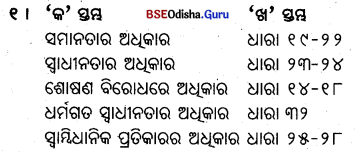
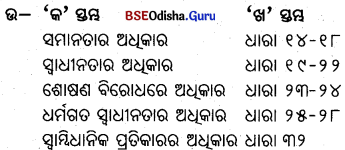
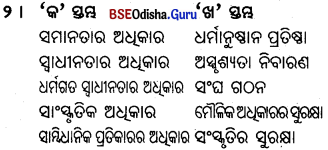
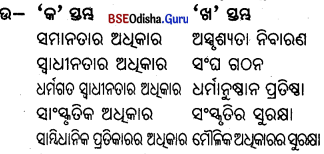
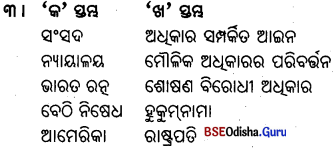
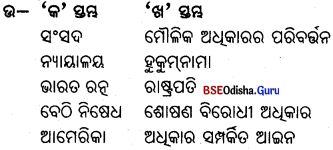
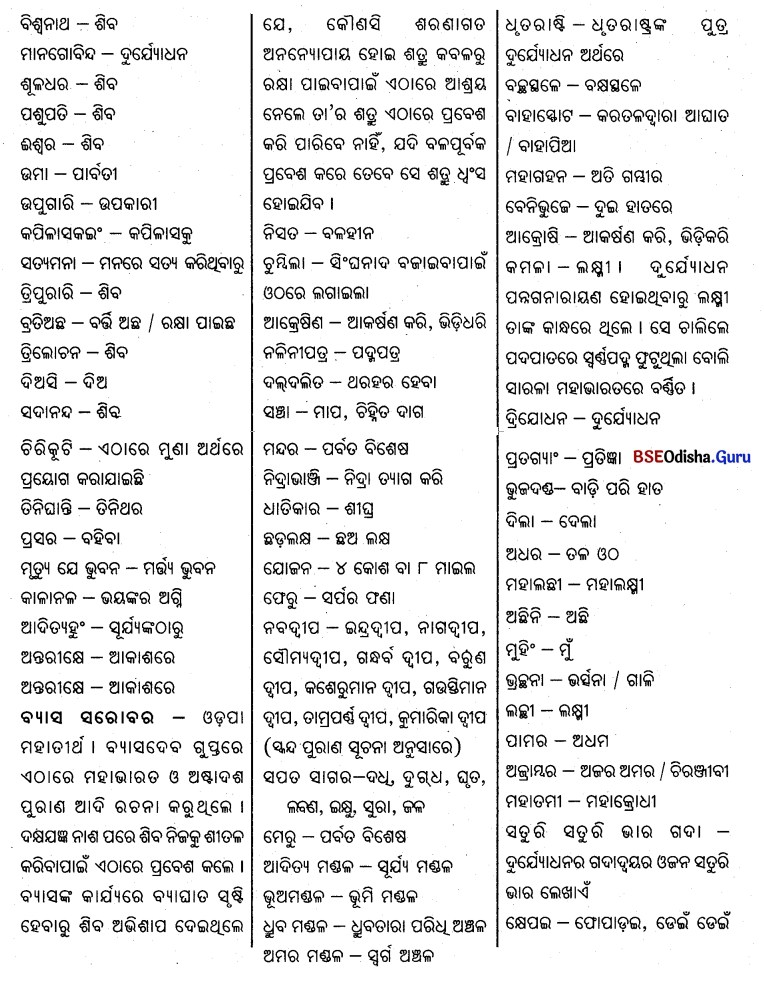
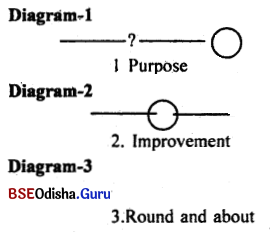
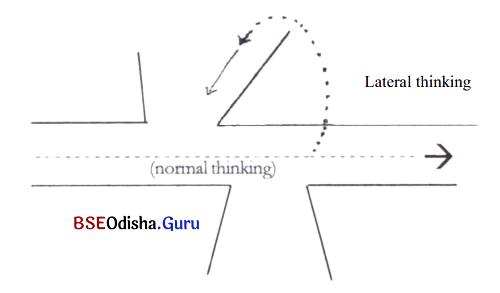
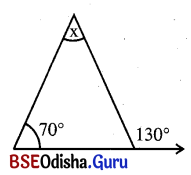
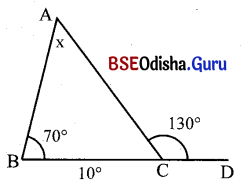
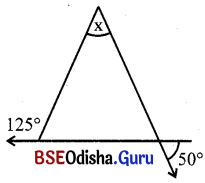
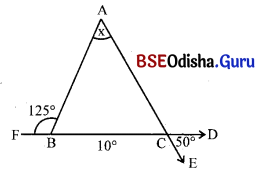
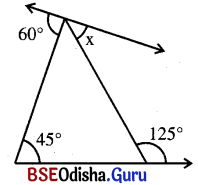
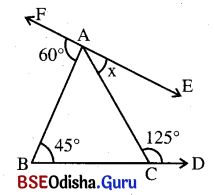
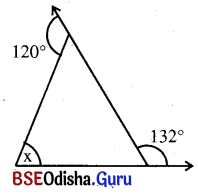
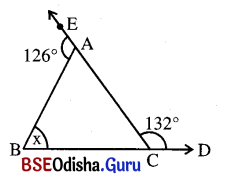
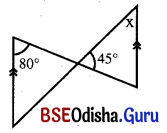
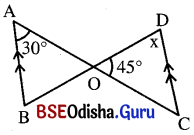
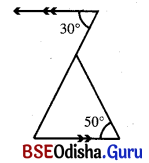
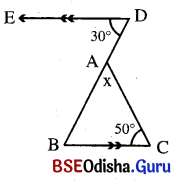
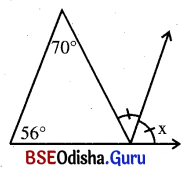
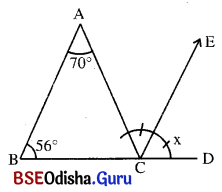
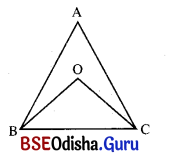
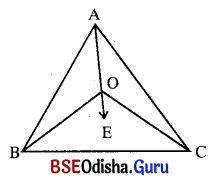 (ପ୍ରମାଣିତ)
(ପ୍ରମାଣିତ)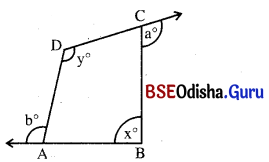
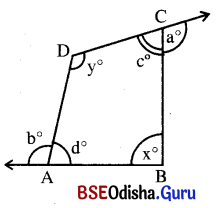
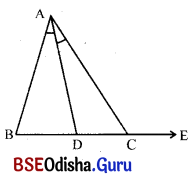
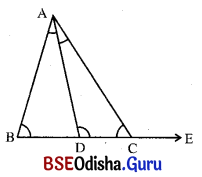 (ପ୍ରମାଣିତ)
(ପ୍ରମାଣିତ)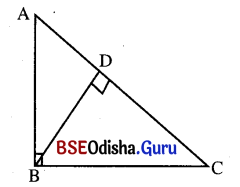 (ପ୍ରମାଣିତ)
(ପ୍ରମାଣିତ)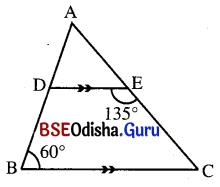
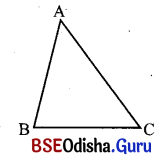
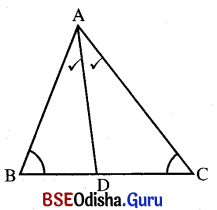 (ପ୍ରମାଣିତ)
(ପ୍ରମାଣିତ)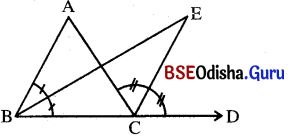
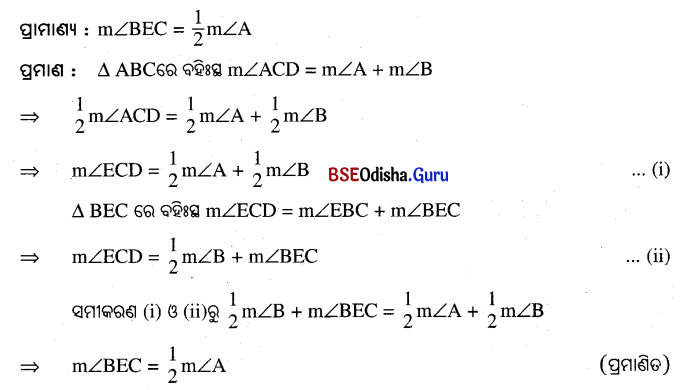
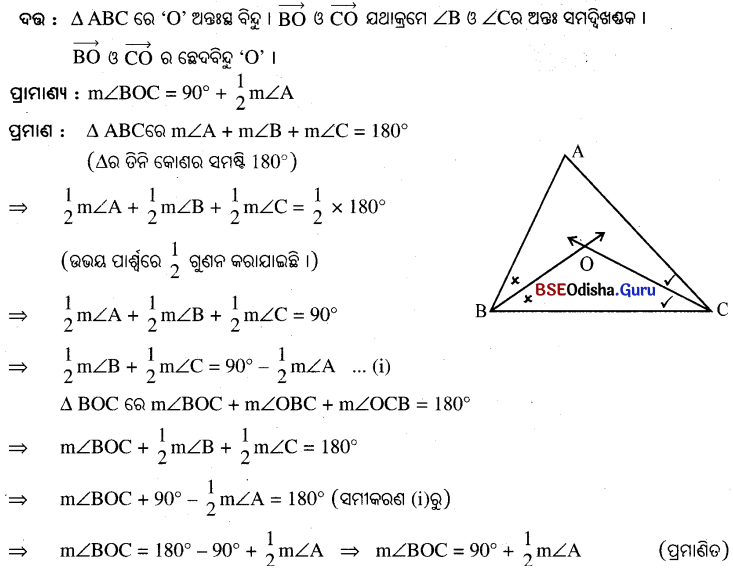
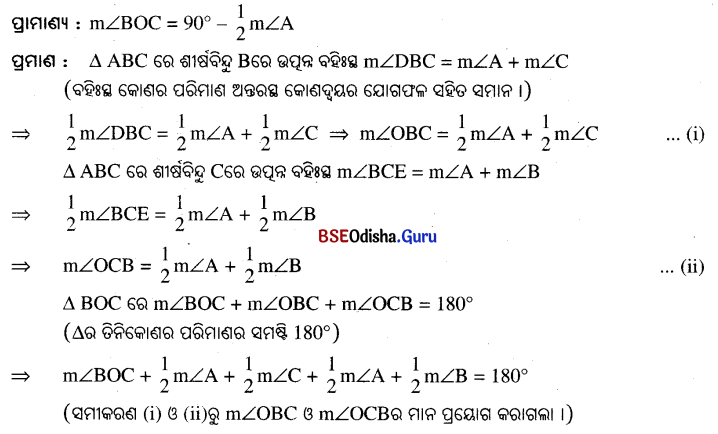
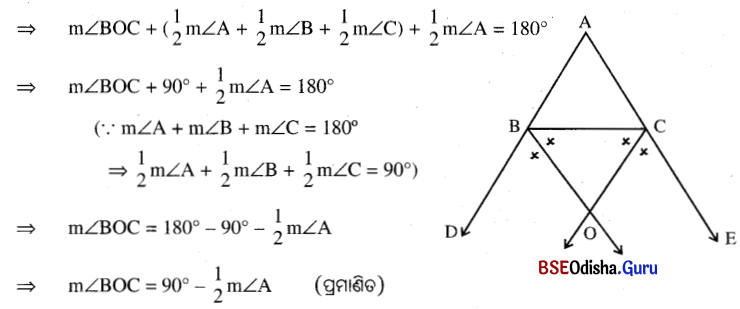
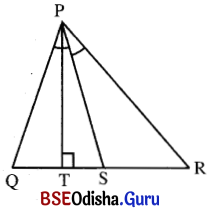 (ପ୍ରମାଣିତ)
(ପ୍ରମାଣିତ)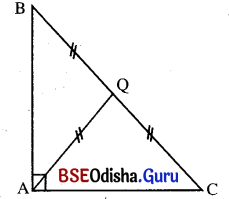 (ପ୍ରମାଣିତ)
(ପ୍ରମାଣିତ)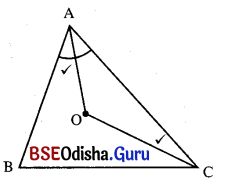 (ପ୍ରମାଣିତ)
(ପ୍ରମାଣିତ)